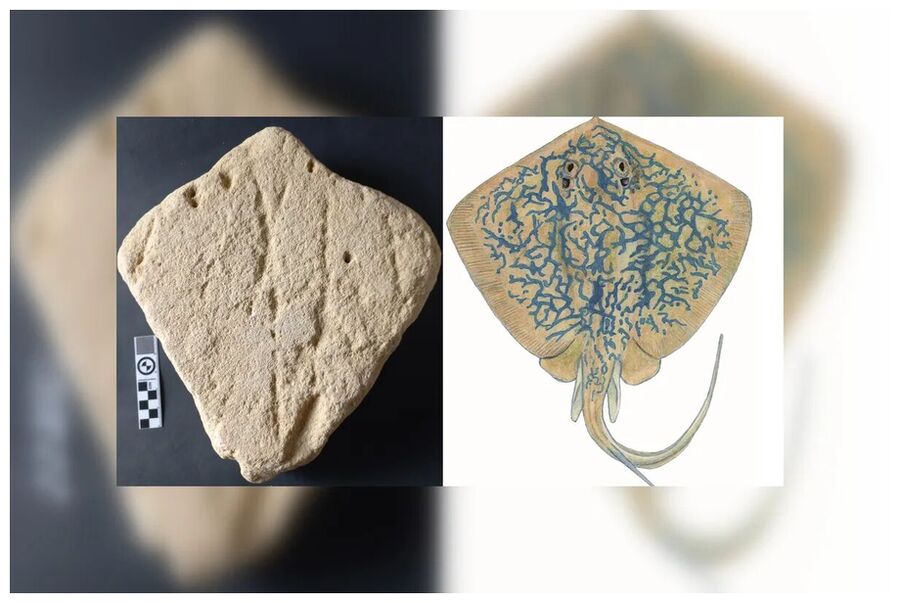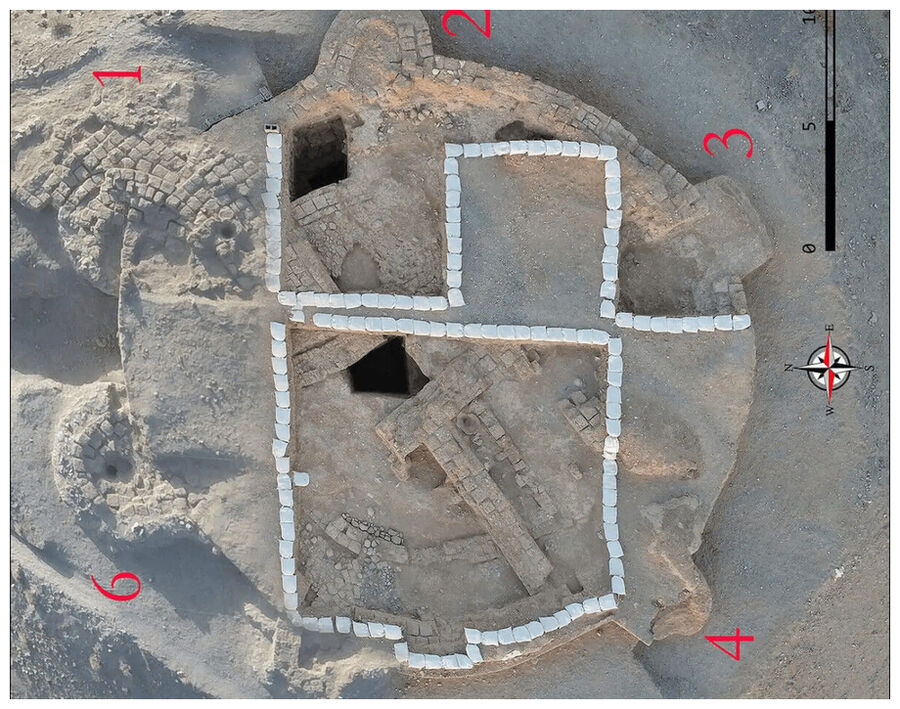This is 90,000 years before cave paintings started to emerge in Europe.
© Image courtesy of Jan De Vynck (left) and Paul Cowley and Alan Whitfield (right)Spot the difference: the stingray "sculpture" with measuring bar (10cm) for scale and an illustration of a blue stingray.
At first glance, this might just look like strangely symmetrical rock. However, researchers have recently taken a deeper look at the object and
speculate that it may be a prehistoric sand sculpture of a stingray. If that's true, it would make the relic the oldest known artwork of another animal.
It was discovered in 2018 along the cliffs near Still Bay, about 330 kilometers (205 miles) east of Cape Town on South Africa's coast. Along with its remarkable symmetry, some noticed the rock's shape had an uncanny similarity to the shape of a stingray, albeit with its tail snapped off.
In a new study, researchers at Nelson Mandela University investigated this idea and concluded that the object was created as a sand sculpture to depict a blue stingray (
Dasyatis chrysonata). The team overlaid images of a blue stingray, a native of Africa's southern coast, with the rocky object and highlighted how they closely match in size and proportions.
To create the object, they contend that a prehistoric human may have come across a stingray along the water's shore and traced around it, a bit like a child making a sandcastle.
"This is the first and thus far the only example that suggests tracing from this time period. The chances of something like this being preserved and amenable to our interpretation are remote, so it is possible that this may be the only example ever identified, but we can always hope that more will become apparent,"
Charles Helm, lead study author and Research Associate from the African Centre for Coastal Palaeoscience at Nelson Mandela University, told IFLScience.








Comment: A recent analysis of Vittrup Man, who was sacrificed around the same period and at Denmark's transition to the agricultural 'revolution', found: See also: